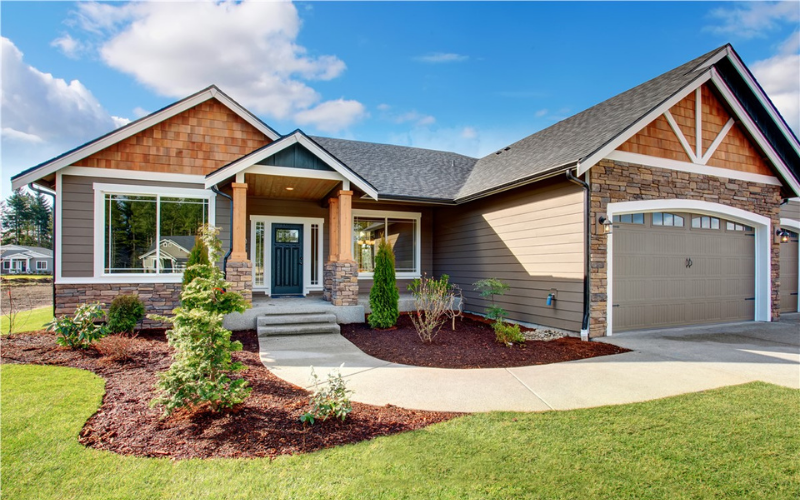
Myth-busting truths about bottom-line home pricing
It’s May, the month many Alabamians turn their attention to upgrading, buying or selling a home.
Jean McLean >>> Twitter
That makes May one of the busiest months of the year for Realtors like Anita Latham, broker/owner of RE/MAX First Choice and appraisers like Tom Horn of Thomas C. Horn Real Estate Appraisal. Like their colleagues, Horn and Latham track area pricing trends year-round. Some of their resulting pricing advice to clients includes the following myth-busting truths about property values:
Myth #1: Buyers determine home prices.
Like many myths, this one is sort-of true. Demand drives supply, influencing price. But most buyers must borrow to buy, and lenders must determine not only whether each borrower is equipped to repay, but whether a home could be resold to another buyer at the contracted price.
Lenders therefore rely on independent appraisers to gauge norms in today’s ever-changing market. Latham says some Realtors are now advising owners to acquire pre-listing appraisals for atypical homes in rarely-listed neighborhoods, rural acreage, estate-owned properties or even homes likely to draw multiple buyers.
“Just because we get a contract for that price doesn’t mean it will appraise at that price,” she says of emotion-driven offers. “Right now, we’re seeing a lot of bidding wars. The seller is generally going to take the highest bid. But if it’s not at an appraised price, the contract might fall through. That’s why it helps sellers in today’s market to know up-front what their house might appraise for, so they don’t work a contract that won’t appraise.”
Myth #2: Cost equals value.
The stark truth is that buyers don’t always receive a positive return on investment. Housing bubbles may pop. Owners may invest in ill-advised upgrades, from extensive additions to elaborate pools.
“Value depends on what is popular and expected in the area,” says Horn, author of BirminghamAppraisalBlog.com. “If you have a neighborhood where 90 percent of the homes have pools, then you’re going to get more for that pool when you’re ready to sell it. However, you’ll likely never get a 100 percent return on your cost.”
Myth #3: Appraisers use formulas.
“There is no formula,” says Horn of respected appraisal practices. Instead, pros determine square-foot values by evaluating how a home’s construction quality, materials and condition compare with its neighbors. That means appraising is as much art as science.
“Realtors can help explain this process to their clients,” says Latham. “Consumers should especially know that below-grade areas – basements, lower-level split entry areas, and the lower sections of split-levels -- are not priced at the same square-footage rate as main level or second story areas.”
Even basements are not formulaic. “They may be priced at 50 percent of the main level value, but they may be priced lower than that,” says Horn. Basement-area pricing depends on how common below-grade construction is in a community, and how basements there are typically finished. Horn says the absence of industry formulas means good appraisers closely study current market data.
“We are now doing more statistical analyses on property sales, to analyze hundreds of sales for pricing trends,” he says. “That allows us to isolate the value of certain items, including basements, to determine if they add value -- and if so, how much.”
Myth #4: Larger houses draw higher square footage values.
Again, this is a sort-of true statement; larger houses typically sell for more. But Horn says consumers should be careful about applying the same square footage dollars to multiple sectors. “If I was evaluating a 2,000-square foot home I wouldn’t want to compare it with a 1,000-square foot home,” says Horn. “A small home usually sells for more per square foot.”
That means that, while a community’s garden homes may sell for an average $105,000 ($105 per square foot), just down the same street the community’s two-story homes may sell for $180,000 ($90 per square foot). “That’s why you really have to know which homes compare to yours, and how to place the emphasis,” Horn says.
Myth #5: Appraisers don’t value upgrades.
Latham and other Alabama Realtors tell their clients that appraisers do consider both condition and upgrades in their opinions of value. However, such considerations still focus on neighborhood norms. Appraisers adjust values according to whether a home, from flooring to fixtures, compares with its nearby competition.
“What I tell people, when they’re upgrading, is to look around the neighborhood to see what is common and typical, and what to expect,” says Horn. “If you’re thinking about upgrading from vinyl and laminate, go to an open house in your community and see if they have granite countertops or hardwood floors. But again, cost doesn’t equal value. You should know that if you spend $15,000 upgrading, you can’t automatically expect to sell your house for $15,000 more.”
The bottom line:Realtors work closely with appraisers, and will sometimes suggest clients acquire professional appraisals to settle pre-listing or cash-purchasing uncertainties. Some agents are willing to provide pricing information for owners weighing whether they should remodel now to sell later or sell as-is to buy a better-fit home. But most can quickly provide accurate pricing opinions that Horn says are typically very reliable.
“Realtors talk to buyers all the time, and they know what people are upgrading, and what buyers are expecting,” he says. “If sellers let Realtors do their jobs, they’ll know what prices the market can withstand, or whether they need to get an appraiser to help with pricing. If buyers and sellers work with their Realtors, they will have done their research. Realtors are valuable assets for everyone.”
This blog is made possible by the Greater Alabama Multiple Listing Service (GreaterAlabamaMLS.com), a subsidiary corporation of BAR that was founded in 1958 and is recognized as Alabama’s trusted real estate authority.





